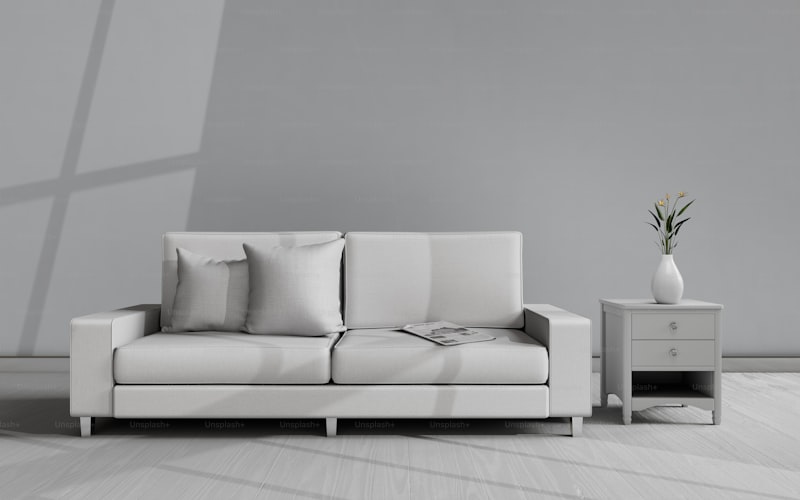Transform Your Space: Minimalistic Details That Make a Statement
In today's fast-paced world, minimalism has emerged as a significant design philosophy, transcending mere aesthetic appeal to embody a lifestyle choice that promotes simplicity and intentionality. This article explores the minimalistic details that make a statement, emphasizing how these subtle elements can drastically transform a space without overwhelming it.
Understanding Minimalism
Minimalism isn’t just a trend; it’s a mindset. The principle revolves around the idea that less is more. It's about stripping away the unnecessary and focusing on the essential. This approach not only declutters physical spaces but also mental landscapes, fostering a serene and inviting atmosphere.
Key Elements of Minimalistic Design
To embrace minimalism fully, one must understand its foundational elements. These include:
| Element | Description |
| Color Palette | Opt for neutral tones to create a calming environment. Shades of white, gray, and beige are timeless choices. |
| Furniture | Choose pieces that are functional yet aesthetically pleasing. Think clean lines and natural materials. |
| Lighting | Utilize natural light as much as possible, supplemented with simple light fixtures that blend seamlessly into the space. |
| Decor | Incorporate art and decor sparingly. A single, striking piece can often make a greater impact than an overcrowded wall. |
Minimalistic Details That Make a Statement
Now that we've established the core principles of minimalistic design, let's dive into specific details that can amplify its impact:
1. Statement Furniture Pieces
A few standout furniture items can anchor a room and draw the eye without cluttering the space. Consider investing in a bold armchair with unique lines or a sleek coffee table crafted from sustainable materials. These pieces can reflect personality while adhering to minimalistic principles.
2. Bold Artwork
Selecting a large piece of art or an eye-catching sculpture can serve as a focal point in an otherwise subdued environment. The contrast between the vibrant artwork and a neutral backdrop enhances both without overwhelming the senses. Look for paintings that evoke emotion or sculptural forms that inspire curiosity.
3. Textures and Materials
Layering textures helps to create warmth within a minimalistic design. Incorporate elements like soft wool throws, textured rugs, or a mix of metals to add depth. For example, a smooth marble surface paired with a cozy knitted blanket creates a harmonious balance.
4. Greenery
Bringing in plants can breathe life into a minimalistic space. Opt for a single large potted plant or a set of varying heights to create visual interest without cluttering. Plants not only provide a splash of color but also improve air quality, making your environment more inviting.
5. Thoughtful Lighting Fixtures
Lighting plays a critical role in minimalistic design. Fixtures like pendant lights or sleek floor lamps can serve as functional art pieces. Consider designs that incorporate geometric shapes or natural materials, effortlessly drawing attention while serving their purpose.
Creating a Cohesive Look
To ensure that all elements work together harmoniously, adhering to a consistent theme is essential. Begin by defining your style—whether it's Scandinavian simplicity, Japanese Zen, or modern industrial. Once established, select pieces that reflect this theme, avoiding anything that doesn't contribute to the overall aura of tranquility.
Tips for Success
Here are some handy tips to help you implement minimalistic details effectively:
- Plan Your Space: Lay out a floor plan to visualize where each element will fit. This helps prevent overcrowding.
- Prioritize Quality Over Quantity: Invest in fewer high-quality pieces rather than numerous items that may not last.
- Regularly Edit Your Space: Periodically assess your decor and furniture. If an item no longer resonates, consider parting ways with it.
- Focus on Function: Choose items that serve a dual purpose. A beautiful storage bench, for example, can be stylish and functional.
Common Questions About Minimalistic Design
As you embark on your minimalistic journey, here are some frequently asked questions:
1. Can minimalism be cozy?
Absolutely! By adding warmth through textures and greenery, you can create a space that feels inviting while still adhering to minimalist design principles.
2. How can I maintain a minimalistic space with children or pets?
Choose durable materials and opt for furniture that can handle wear and tear. Embrace open spaces for play while ensuring that items are functional and easy to clean.
3. Is minimalism only for large spaces?
No! Minimalism is versatile and can be applied to any space—small or large. The key is to focus on functionality and keep clutter to a minimum.

Conclusion
Minimalistic details that make a statement are not just about the items you choose; they reflect a way of life—embracing simplicity, functionality, and aesthetic appeal. By incorporating quality pieces, thoughtful decor, and strategic layouts, you can craft a space that speaks volumes with minimal effort. Remember, the beauty of minimalism lies in its ability to create tranquility amidst chaos—make your space a serene retreat that encourages peace and mindfulness.
As you explore the endless possibilities within minimalism, keep in mind that your home should ultimately reflect your personal style, creating a balance that speaks to who you are. Implement these tips and enjoy the journey towards a beautifully minimalistic lifestyle.